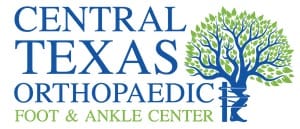Common Diagnoses:
Bunion (Hallux Valgus)
Bunion (Hallux Valgus) Overview
A bunion is a bump that forms on the outside of the big toe. This foot deformity occurs from years of pressure on the big toe joint (the metatarsophalangeal, or MTP, joint). Eventually, the toe joint gets out of alignment, and a bony bump forms.
Bunion (Hallux Valgus) Symptoms
In addition to the visible bump on the inside of the foot, symptoms of a bunion may include:
- Pain and tenderness
- Redness and inflammation
- Hardened skin on the bottom of the foot
- A callus or corn on the bump
- Stiffness and restricted motion in the big toe, which may lead to difficulty in walking
Bunion (Hallux Valgus) Diagnosis
Your doctor will perform a careful examination of your foot. Although your doctor will probably be able to diagnose your bunion based on your symptoms and on the appearance of your toe, he or she will also order an x-ray.
X-Rays
X-rays provide images of dense structures, such as bone. An x-ray will allow your doctor to check the alignment of your toes and look for damage to the MTP joint.
The alignment of your foot bones changes when you stand or sit. Your doctor will take an x-ray while you are standing in order to more clearly see the malalignment of the bones of your foot. He or she will use the x-rays to determine how severe the bunion is, and how best to correct it.
Bunion (Hallux Valgus) Treatment
Nonsurgical Treatment
In most cases, bunions are treated without surgery. Although nonsurgical treatment cannot actually “”reverse”” a bunion, it can help reduce pain and keep the bunion from worsening.
Changes in Footwear
In the vast majority of cases, bunion pain can be managed successfully by switching to shoes that fit properly and do not compress the toes. Some shoes can be modified by using a stretcher to stretch out the areas that put pressure on your toes. Your doctor can give you information about proper shoe fit and the type of shoes that would be best for you.
Padding
Protective “”bunion-shield”” pads can help cushion the painful area over the bunion. Pads can be purchased at a drugstore or pharmacy. Be sure to test the pads for a short time period first; the size of the pad may increase the pressure on the bump. This could worsen your pain rather than reduce it.
Orthotics and Other Devices
To take pressure off your bunion, your doctor may recommend that you wear custom-made shoe inserts (orthotics). Toe spacers can be placed between your toes. In some cases, a splint worn at night that places your big toe in a straighter position may help relieve pain.
Icing
Applying ice several times a day for 20 minutes at a time can help reduce swelling. Do not apply ice directly on your skin.
Medications
Nonsteroidal anti-inflammatory medications such as ibuprofen and naproxen can help relieve pain and reduce swelling. Other medications can be prescribed to help pain and swelling in patients whose bunions are caused by arthritis.
Your doctor may recommend surgery for a bunion or bunionette if, after a period of time, you have pain and difficulty walking despite changes in footwear and other nonsurgical treatments. Bunion surgery realigns bone, ligaments, tendons, and nerves so that the big toe can be brought back to its correct position.
